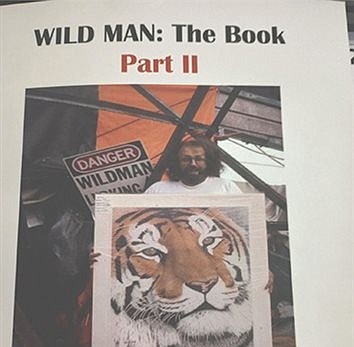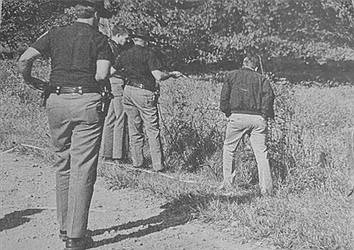Fireflies are Indiana’s state insects, are they disappearing?
June 14, 2023 at 6:25 p.m.

For millions of Hoosiers, the advent of summer brings back memories of long days followed by nights spent catching fireflies. Lightning bugs, as some folks call them, are the backdrop to the landscapes many of us hold near and dear. And yet ask younger generations about fireflies, and they seem surprised. Yards and fields no longer seem filled with these “jewels of the night.”
Are fireflies disappearing? There are about 43 species of Lampyridae in Indiana. As a matter of fact, Indiana's state insect is the Say's Firefly. Not only is this species of firefly native to Indiana, it also is named after a Hoosier—Thomas Say. Say was considered the Father of North American Entomology (the study of insects). Say was living in New Harmony, in Posey County, when he first described the Say’s Firefly, in 1826. In 2018, the Indiana legislature and Governor Eric Holcomb proclaimed the Say's Firefly as the state's bug after years of campaigning by elementary students. Unfortunately, however, this environmental staple of our area is apparently now under threat due to a combination of factors.
A major assessment published in 2021 revealed that 11% of North American firefly species are threatened with extinction, with 33% categorized as species of least concern, according to the IUCN Red List. The rest of the species are data-deficient, meaning there's not enough information to assess their status properly.
One of the major threats to fireflies is light pollution. Fireflies, which are primarily nocturnal, use their glowing lights to communicate with each other, to find mates, and to establish territory. Artificial lights (such as streetlights, house lights, or car headlights) make it challenging for fireflies to communicate and mate, leading to a decline in the population.
According to Indiana Dept. of Natural Resources, the males are generally the ones we see flashing while in flight. They do so to attract females, who sit in the grass or on top of taller weeds. If she wants to meet a particular male, the female will respond with a flash of her own. The male will fly down to her to mate.
The light these beetles produce comes from a chemical reaction called bioluminescence, in which visible light energy is released. The reaction involves a chemical burning of luciferin, the light-emitting molecule, along with oxygen and magnesium. The emission of a flash is triggered by nerve impulses to the firefly’s lantern. Luciferin has been mimicked in labs to create glow sticks, for example, so the need for darkness is evident for it to be effective.
Chemicals used to control insect populations are also interfering with fireflies’ reproduction. The larvae of fireflies live in water for up to two years, making them particularly vulnerable to chemical runoff. The larvae live and grow in streams, wetlands, and damp fields, but when these habitats are pumped, drained, excavated, or sprayed with chemicals, the larvae die off.
To protect fireflies, the Xerces Society for Invertebrate Conservation recommends leaving piles of leaf litter around lawns and yards to serve as habitats, mowing less to preserve habitat, reducing the use of chemical pesticides, and turning off unnecessary lights and closing blinds at night. If you live on a farm, using fences to keep cattle out of swamps or wetlands can also help.
Fireflies are an essential part of the ecosystem and have been around for millions of years. As the DNR states, “Fireflies play an important role in nature beyond providing pyrotechnics. They loosen soil, allowing oxygen, sunlight and water to penetrate.
They maintain balance by eating impressive quantities of food while in the larval form. Although toxic to many potential diners, they are eaten by spiders, frogs and other insects. They also provide beauty and entertainment, even serving as a source for exercise while being pursued by children and fun-loving adults on summer evenings.” Let’s all look out for fireflies this summer!
Latest News
E-Editions
Events
For millions of Hoosiers, the advent of summer brings back memories of long days followed by nights spent catching fireflies. Lightning bugs, as some folks call them, are the backdrop to the landscapes many of us hold near and dear. And yet ask younger generations about fireflies, and they seem surprised. Yards and fields no longer seem filled with these “jewels of the night.”
Are fireflies disappearing? There are about 43 species of Lampyridae in Indiana. As a matter of fact, Indiana's state insect is the Say's Firefly. Not only is this species of firefly native to Indiana, it also is named after a Hoosier—Thomas Say. Say was considered the Father of North American Entomology (the study of insects). Say was living in New Harmony, in Posey County, when he first described the Say’s Firefly, in 1826. In 2018, the Indiana legislature and Governor Eric Holcomb proclaimed the Say's Firefly as the state's bug after years of campaigning by elementary students. Unfortunately, however, this environmental staple of our area is apparently now under threat due to a combination of factors.
A major assessment published in 2021 revealed that 11% of North American firefly species are threatened with extinction, with 33% categorized as species of least concern, according to the IUCN Red List. The rest of the species are data-deficient, meaning there's not enough information to assess their status properly.
One of the major threats to fireflies is light pollution. Fireflies, which are primarily nocturnal, use their glowing lights to communicate with each other, to find mates, and to establish territory. Artificial lights (such as streetlights, house lights, or car headlights) make it challenging for fireflies to communicate and mate, leading to a decline in the population.
According to Indiana Dept. of Natural Resources, the males are generally the ones we see flashing while in flight. They do so to attract females, who sit in the grass or on top of taller weeds. If she wants to meet a particular male, the female will respond with a flash of her own. The male will fly down to her to mate.
The light these beetles produce comes from a chemical reaction called bioluminescence, in which visible light energy is released. The reaction involves a chemical burning of luciferin, the light-emitting molecule, along with oxygen and magnesium. The emission of a flash is triggered by nerve impulses to the firefly’s lantern. Luciferin has been mimicked in labs to create glow sticks, for example, so the need for darkness is evident for it to be effective.
Chemicals used to control insect populations are also interfering with fireflies’ reproduction. The larvae of fireflies live in water for up to two years, making them particularly vulnerable to chemical runoff. The larvae live and grow in streams, wetlands, and damp fields, but when these habitats are pumped, drained, excavated, or sprayed with chemicals, the larvae die off.
To protect fireflies, the Xerces Society for Invertebrate Conservation recommends leaving piles of leaf litter around lawns and yards to serve as habitats, mowing less to preserve habitat, reducing the use of chemical pesticides, and turning off unnecessary lights and closing blinds at night. If you live on a farm, using fences to keep cattle out of swamps or wetlands can also help.
Fireflies are an essential part of the ecosystem and have been around for millions of years. As the DNR states, “Fireflies play an important role in nature beyond providing pyrotechnics. They loosen soil, allowing oxygen, sunlight and water to penetrate.
They maintain balance by eating impressive quantities of food while in the larval form. Although toxic to many potential diners, they are eaten by spiders, frogs and other insects. They also provide beauty and entertainment, even serving as a source for exercise while being pursued by children and fun-loving adults on summer evenings.” Let’s all look out for fireflies this summer!





